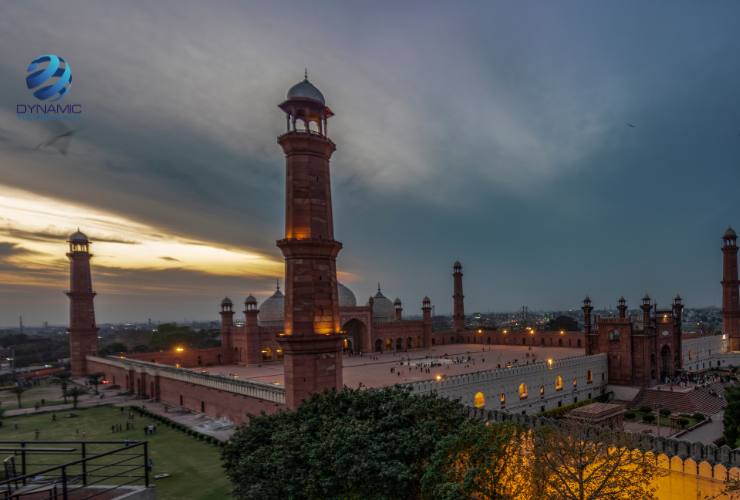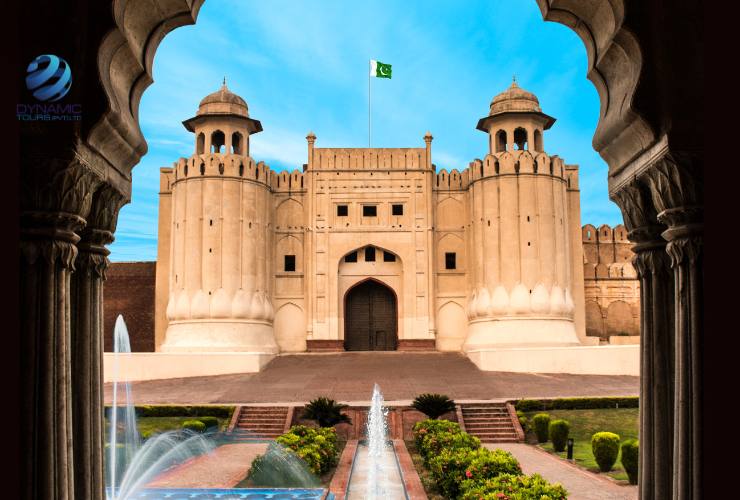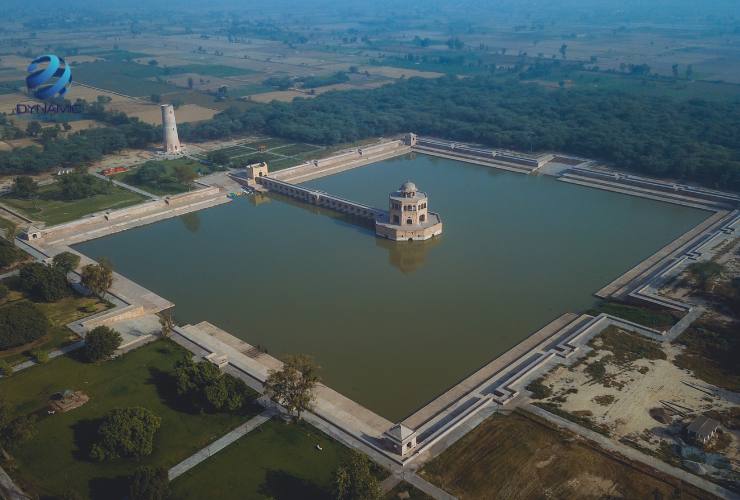The arrival of people from the Central Asian nations such as the Turks and Mongols was a substantial turning point in the Pakistan’s history. The arrival of the Mughals marked a new era in the history of Pakistan, one that was characterized by a remarkable mixture of Islamic, Turkish, and Persian cultures. This mixed heritage is reflected in the unique architecture of the Mughal period, which is characterized by its symmetry, geometrical shapes, and detailed ornamentation.
The use of pointed arches, bulbous domes, beautiful minarets with cupolas at the four corners, spacious halls, and gigantic entrances are typical features. Important examples of Mughals architecture include Lahore Fort, Badshahi Mosque, Masjid Wazir Khan, and Shalimar Gardens in Pakistan.
The Badshahi Mosque, located in Lahore, is a monumental mosque that once held the title of “largest mosque on earth”. Its three massive marble domes and complex frescoes are breathtaking, and it is best known for its interior red sandstone carving.

Lahore Fort is a major attraction in Lahore City and is thought to have been built at the same time as the city itself. It was originally built by a son (LOH) of the legendary Ramayana; however, it was later enlarged and renovated by several Mughal emperors including Akbar, Jehangir, and Shah Jahan, which gave it its distinct Mughal architectural shape.

The Lahore Shalimar Gardens (UNESCO Heritage Site) are a prime example of Mughal architecture and landscape design, built in 1641 by Emperor Shah Jahan. The gardens are made up of three terraces with pavilions, ponds, and waterfalls. The central rectangular terrace is the largest, and features a pool surrounded by pavilions and gazebos. The canals and waterfalls are a major highlight of the gardens and add to the overall aesthetic appeal.

The Naulakha Pavilion is a white marble chamber for the personal use of Emperor Shah Jahan, who had it built next to the courtyard of Sheesh Mahal in Lahore Fort. It is listed in UNESCO Heritage List. It offers panoramic views of the ancient city of Lahore from its western façade.
The Hiran Minar “The Tower of the Deer” is a Mughal-era complex from the early 17th century located in Sheikhupura, Pakistan. It was built to honor the Mughal Emperor Jahangir’s beloved pet antelope named Mansraj. The emperor was known for his love of nature, and this complex shows the Mughal relationship between humans, pets, and hunting.

Jahangir’s Tomb is a beautiful example of Mughal architecture. The tomb dates to 1637 and is in Shahdara Bagh, Lahore. The exterior of the tomb is decorated with Pietra Dura (decorative stone objects), and the interior is adorned with frescoes and marble. The tomb, along with the adjacent Akbari Sarai and Asif Khan’s Tomb, is part of a set that has been proposed for UNESCO World Heritage status. If you’re ever in Lahore, be sure to check it out!
WhatsApp us

